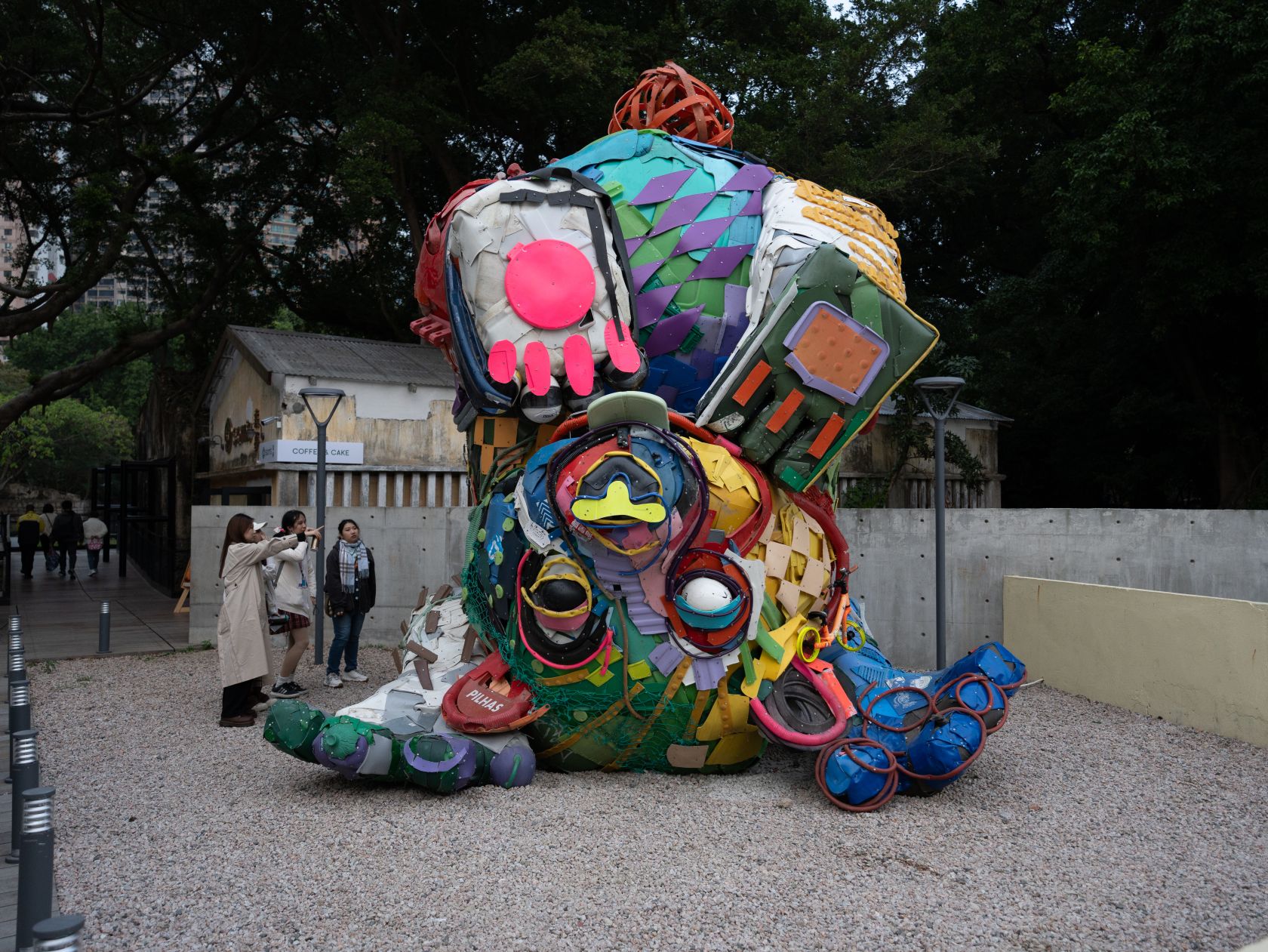NEW BEDFORD, MA – Massachusetts Design Art and Technology Institute (DATMA), the non-collecting contemporary art institute and its partners, will once again bring a variety of free public art and programmes to New Bedford, MA.
For its 6th year, DATMA will kick off TRANSFORM: Reduce, Revive, Reimagine on June 14, presenting a new semi-permanent sculpture in the heart of the city, a temporary photography exhibition along the historic waterfront, and a variety of robust programs and educational workshops all season until October 14, 2024.
TRANSFORM: Reduce, Revive, Reimagine will be a public art series uniting sustainable art and cutting-edge technology.

Renowned Lisbon street artist Bordalo II will showcase an awe-inspiring, newly commissioned sculpture alongside the region’s innovative technologies in robotics, marine research and exploration, and wind energy, exploring the intricate balance between artistic expression and environmental consciousness.
Through public art exhibitions and free programming, TRANSFORM: Reduce, Revive, Reimagine will immerse audience members in a world where discarded materials find new life as captivating installations and sustainable practices pave the way for a more innovative future.

Plastic Rooster sculpture by Bordalo II
Bordalo II (Lisbon, Portugal) is a Portuguese street artist known for his unique and impactful artwork that conveys powerful environmental messages. His artwork often centers around the concepts of excessive production and consumption, wherein he assembles discarded materials, such as old car parts, scrap metal, and plastic waste, to sculpt striking and thought-provoking animal portraits. By giving life to animals using the very materials responsible for their habitat destruction, Bordalo II highlights the urgent need for environmental conservation and waste reduction.

A colorful newly commissioned animal sculpture called Plastic Rooster will be on display in the heart of downtown New Bedford. The rooster was chosen for its common symbol of Portugal, where 55% of New Bedford’s population claim to have Portuguese forebears. Measuring approximately 12 feet long, 9 feet wide, and 15 feet tall, the artwork will be created out of repurposed waste materials from the South Coast region and collected to be used for the site-specific artwork. Plastic Rooster will be created together with local landfill management departments and 11th-grade Metal Fabrication students from the Greater New Bedford Regional Vocational Technical High School, empowering and building pride among the local and talented young people.

"Our partnership with DATMA has been nothing short of extraordinary,” shared Warley Williams III, Principal of the Greater New Bedford Regional Vocational Technical High School. “Since 2021, our students have been involved in fabricating outdoor displays but this year's project is truly groundbreaking. Working alongside an internationally acclaimed artist and a professional engineer on a semi-permanent sculpture right from the start is an unparalleled opportunity. This collaboration not only enriches our students' educational experience but also contributes to the vibrant cultural landscape of New Bedford.”
Plastic Rooster by Bordalo II will be on view outside, free and open to the public on the green space of the New Bedford YMCA at Union Street and North 2nd Street, and is intended to be explored, interacted with, and used as a backdrop for gathering and events. This artwork will be on display at this location through 2029.

About the Massachusetts Design Art and Technology Institute (DATMA)
The Massachusetts Design Art and Technology Institute (DATMA) was founded to enhance the evolving dynamic cultural and economic life of South Coast Massachusetts. DATMA is committed to bringing world-renowned art, design, and technology exhibitions, programs, and initiatives to the visitors and citizens of New Bedford and the region, identified as one of the Commonwealth’s most creative economies by the Massachusetts Cultural Council. As an exhibitor of public art, DATMA collaborates with the business and education sectors of the region to expand public awareness, bringing new cultural assets into the mix. www.datma.org

About Bordalo II
Artur Bordalo (Lisboa, 1987) is today known as Bordalo II, the artistic name he chose as a tribute to his grandfather, promoting continuity and reinvention of his artistic legacy. His youth was spent in the company of his grandfather, the painter Real Bordalo and his incessant passion for watercolours, and his adventures around illegal graffiti in Lisbon’s underworld. He states that the eight years he spent at the Fine Arts Faculty of Lisbon allowed him to discover sculpture and experimentation with various materials which distanced him from painting, the original art expression which led him there in the first place. Bordalo II’s work often centers around the concepts of excessive production and consumption, wherein he assembles discarded materials, such as old car parts, scrap metal, and plastic waste, to sculpt thought-provoking animal portraits. By giving life to animals using the very materials responsible for habitat destruction, Bordalo II highlights the urgent need for environmental conservation and waste reduction. Bordola’s various artworks have been on view around the world including in Sacramento, Pittsburgh, Paris, Puerto Rico, São Paulo, Thailand, Azerbaijan, Mexico, Belgium, France, Germany, and around Portugal.














